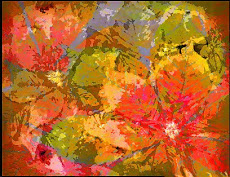The phenomenon has been observed during combat operations in Afghanistan; Michael Yon has documented the effect, and has named it after two U K Soldiers who died there.
"Kopp-Etchells"
When operating in sandy environments, sand hitting the moving rotor blades erodes their surface. This can damage to the rotors presents serious and costly maintenance problems.
The abrasion strips on helicopter rotor blades are made of titanium,
which is very hard, but less hard than sand. So when a helicopter is flown near to the ground in desert environments abrasion occurs,
and at night there is a visible corona, or halo, around the rotor blades,
caused by the sand hitting the titanium and causing it to spark and oxidize.
As damaging as it is, it is also quiet pretty, eerie and awesome.














































5 comments:
I would imagine it also lights them up and makes them an easier target.
It adds to the frightening look of those killing machines.
That is an incredible sight.
Thanks for sharing.
love. these. photos.
so very intensely beautiful.
Velvet and steel.
good post, Mr. Coffeypot!
~AM
I read Yon's on line magainze all the time
Post a Comment